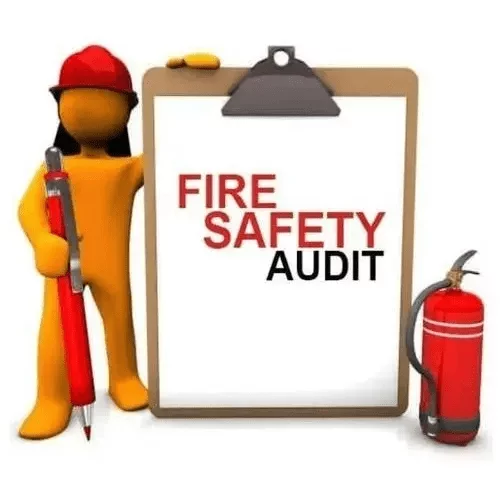Fire safety audits are vital for ensuring that facilities adhere to safety regulations and are prepared for emergencies. However, the effectiveness of these audits can be compromised by common mistakes. At The Safety Master, we are committed to helping organizations conduct thorough and effective fire safety audits. This article explores five common mistakes in fire safety audits and offers practical advice on how to avoid them.
1. Neglecting to Review and Update Documentation
Mistake: One of the most frequent errors in fire safety audits is failing to review and update documentation. Fire safety documentation, such as safety plans, maintenance records, and training logs, must be current to ensure compliance and effectiveness.
How to Avoid It: Ensure that all documentation is regularly reviewed and updated. Before conducting an audit, gather and examine the most recent records of:
- Previous Audit Reports: Review past audit findings and verify that recommended actions have been implemented.
- Maintenance Logs: Check maintenance records for fire protection systems, such as alarms and sprinklers, to confirm they have been serviced as required.
- Training Records: Ensure that employee training records are current and reflect recent fire safety training sessions.
By keeping documentation up-to-date, you can ensure that the audit is based on accurate and relevant information.
2. Inadequate Hazard Identification
Mistake: Inadequate hazard identification can lead to overlooking critical fire risks. Failing to thoroughly identify potential hazards means that safety measures may not address all possible issues.
How to Avoid It: Adopt a systematic approach to hazard identification during the audit. This involves:
- Conducting a Comprehensive Walkthrough: Examine all areas of the facility, including storage areas, electrical rooms, and machinery zones, for potential fire hazards.
- Using Established Tools: Utilize hazard identification tools such as Hazard and Operability Study (HAZOP) and Failure Modes and Effects Analysis (FMEA) to systematically evaluate risks.
- Engaging Employees: Involve employees in the audit process to gather insights into potential hazards that may not be immediately apparent.
Thorough hazard identification helps ensure that all fire risks are addressed and mitigated.
3. Overlooking Compliance with Updated Regulations
Mistake: Fire safety regulations are subject to change, and overlooking updates can result in non-compliance. This mistake can lead to legal issues and increased risk of fire-related incidents.
How to Avoid It: Stay informed about changes in fire safety regulations and codes. To ensure compliance:
- Monitor Regulatory Updates: Regularly check for updates from regulatory bodies such as the National Fire Protection Association (NFPA) and local fire departments.
- Consult with Experts: Engage fire safety experts or consultants to review your facility’s compliance with the latest regulations.
- Incorporate Regulatory Changes: Update fire safety plans and procedures to reflect any changes in regulations.
Staying up-to-date with regulatory changes helps ensure that your facility remains compliant and safe.
4. Failing to Address Training and Preparedness
Mistake: Fire safety audits often overlook the importance of training and preparedness. Without proper training and preparedness, employees may not respond effectively in the event of a fire.
How to Avoid It: Evaluate and enhance training and preparedness as part of your fire safety audit:
- Review Training Programs: Ensure that fire safety training programs are comprehensive and up-to-date. Verify that all employees have completed required training and understand their roles in an emergency.
- Conduct Regular Drills: Schedule and conduct regular fire drills to test the effectiveness of emergency response procedures and familiarize employees with evacuation routes and protocols.
- Assess Preparedness: Evaluate the facility’s overall preparedness for a fire emergency, including the availability of emergency response equipment and the effectiveness of communication systems.
Addressing training and preparedness helps ensure that employees are well-prepared to handle fire emergencies.
5. Ignoring Follow-Up Actions
Mistake: Ignoring follow-up actions is a common mistake that can undermine the effectiveness of a fire safety audit. Failing to address identified issues and implement corrective actions can leave the facility vulnerable to fire risks.
How to Avoid It: Develop and implement a robust action plan to address audit findings:
- Prioritize Issues: Identify and prioritize the most critical issues that require immediate attention. Focus on high-risk hazards and ensure they are addressed promptly.
- Assign Responsibilities: Designate specific individuals or teams to implement corrective actions and set clear deadlines for completion.
- Track and Review Progress: Regularly monitor the progress of corrective actions and conduct follow-up inspections to ensure that issues have been resolved. Update documentation and procedures as necessary.
By following up on audit findings and implementing corrective actions, you can enhance the effectiveness of your fire safety program and reduce the risk of fire incidents.
Conclusion
Fire safety audits are essential for protecting your facility and ensuring compliance with safety regulations. At The Safety Master, we are dedicated to helping organizations conduct thorough and effective fire safety audits. By avoiding common mistakes—such as neglecting documentation, inadequate hazard identification, overlooking regulatory updates, failing to address training, and ignoring follow-up actions—you can enhance your fire safety program and safeguard your business from potential catastrophes. For expert guidance and support with your fire safety audit, The Safety Master is here to help you achieve a safer and more secure workplace.

